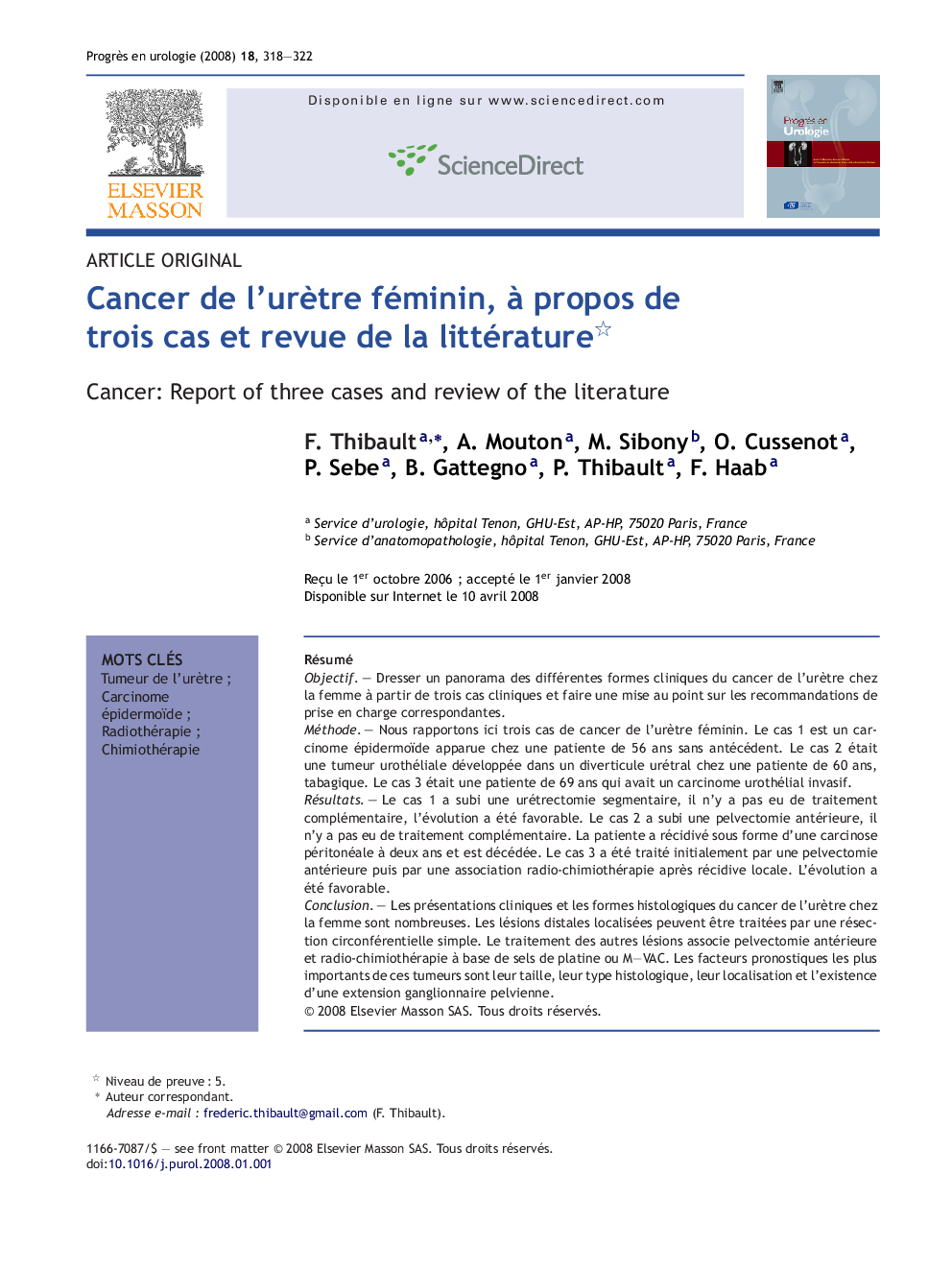| Article ID | Journal | Published Year | Pages | File Type |
|---|---|---|---|---|
| 3824130 | Progrès en Urologie | 2008 | 5 Pages |
RésuméObjectifDresser un panorama des différentes formes cliniques du cancer de l’urètre chez la femme à partir de trois cas cliniques et faire une mise au point sur les recommandations de prise en charge correspondantes.MéthodeNous rapportons ici trois cas de cancer de l’urètre féminin. Le cas 1 est un carcinome épidermoïde apparue chez une patiente de 56 ans sans antécédent. Le cas 2 était une tumeur urothéliale développée dans un diverticule urétral chez une patiente de 60 ans, tabagique. Le cas 3 était une patiente de 69 ans qui avait un carcinome urothélial invasif.RésultatsLe cas 1 a subi une urétrectomie segmentaire, il n’y a pas eu de traitement complémentaire, l’évolution a été favorable. Le cas 2 a subi une pelvectomie antérieure, il n’y a pas eu de traitement complémentaire. La patiente a récidivé sous forme d’une carcinose péritonéale à deux ans et est décédée. Le cas 3 a été traité initialement par une pelvectomie antérieure puis par une association radio-chimiothérapie après récidive locale. L’évolution a été favorable.ConclusionLes présentations cliniques et les formes histologiques du cancer de l’urètre chez la femme sont nombreuses. Les lésions distales localisées peuvent être traitées par une résection circonférentielle simple. Le traitement des autres lésions associe pelvectomie antérieure et radio-chimiothérapie à base de sels de platine ou M–VAC. Les facteurs pronostiques les plus importants de ces tumeurs sont leur taille, leur type histologique, leur localisation et l’existence d’une extension ganglionnaire pelvienne.
SummaryObjectiveTo review the various clinical forms of female urethral cancer in the light of three clinical cases with a review of the corresponding treatment guidelines.MethodThe authors report three cases of female urethral cancer. Case 1 consisted of squamous cell carcinoma in a 56-year-old woman with no particular history. Case 2 was a urothelial tumour arising in a urethral diverticulum in a 60-year-old smoker. Case 3 was a 69-year-old woman patient with invasive urothelial carcinoma.ResultsCase 1 was treated by segmental urethrectomy with no adjuvant therapy and a favourable course. Case 2 was treated by anterior pelvic exenteration with no adjuvant therapy. This patient relapsed in the form of peritoneal carcinomatosis two years later and died. Case 3 was initially treated by anterior pelvic exenteration followed by a chemoradiotherapy combination after local recurrence with a favourable course.ConclusionThere are many clinical presentations and histological forms of female urethral cancer. Localized distal lesions can be treated by simple circumferential resection. The treatment of other lesions comprises anterior pelvic exenteration and platinum- or M-VAC-based chemoradiotherapy. The main prognostic factors for these tumours are their size, histological type, site and the presence of pelvic lymph node extension.
